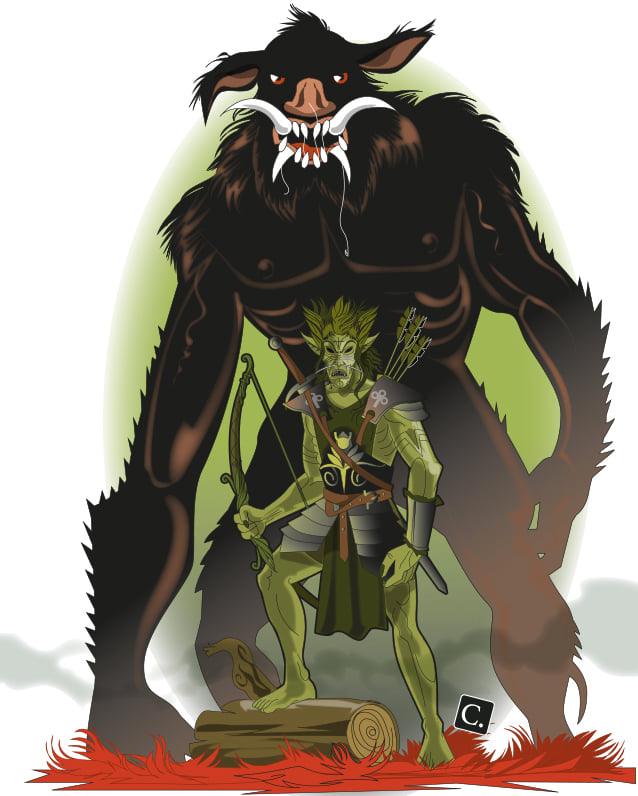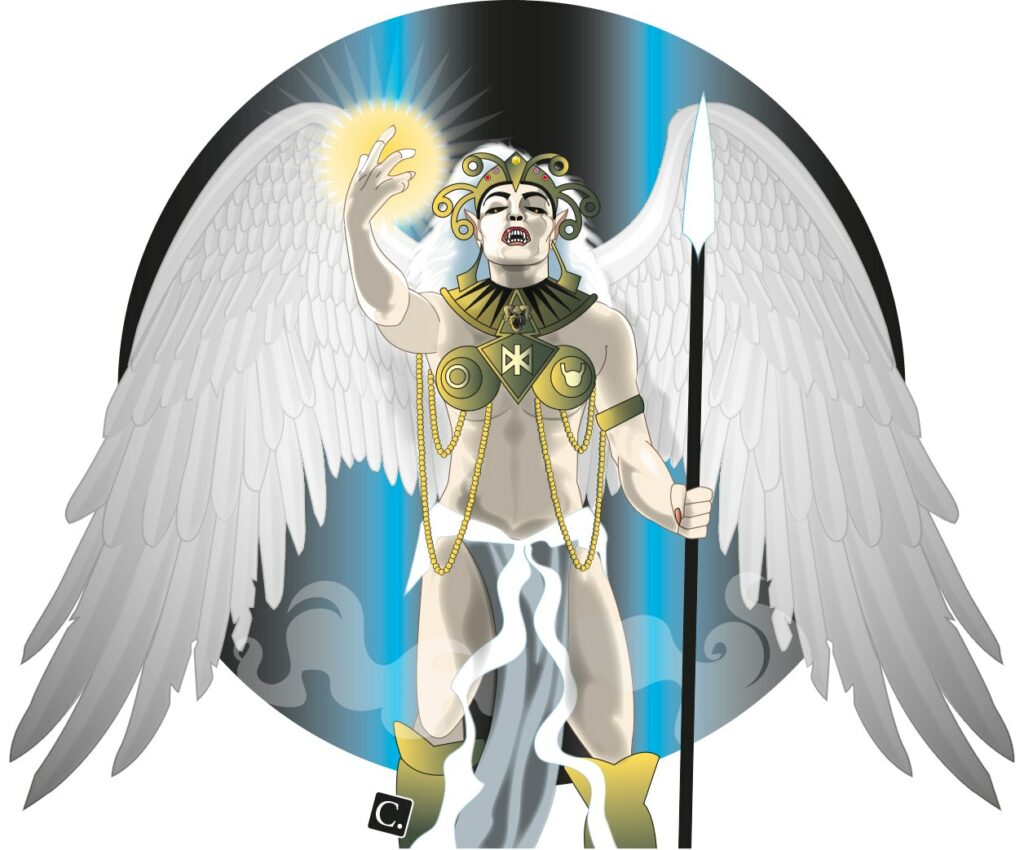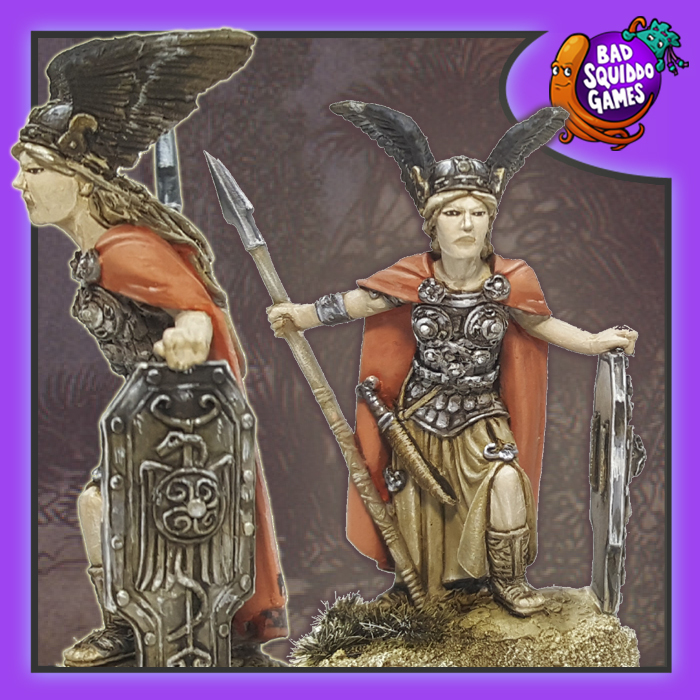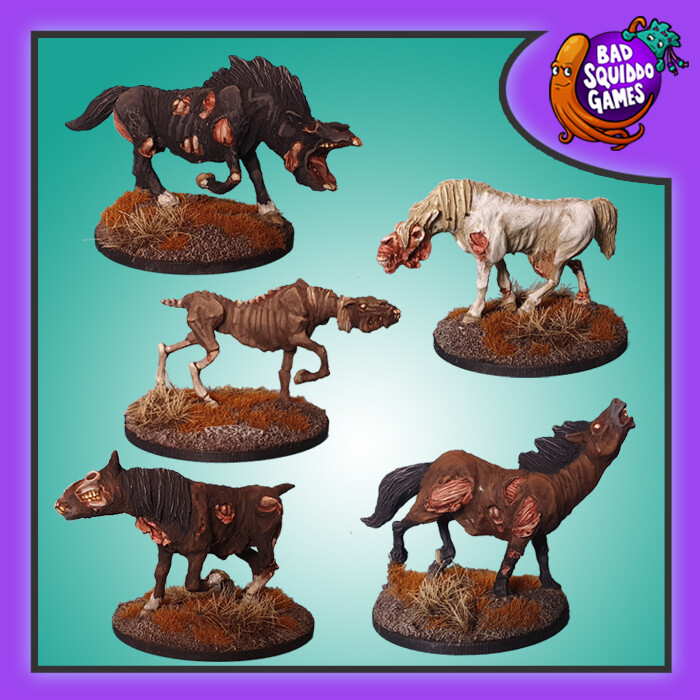Welcome to a new issue of the Journal of Runic Studies, the premier Malkioni publication for studies into the nature of Glorantha. If you haven’t subscribed yet, please consult with the spirit bound to the appropriate electronic page.
We reached issue #50 of the Journal! That’s some sort of milestone, I suppose. Joerg tells me this is the “gold” edition of the Journal, and I’m wondering why he’s feeling so romantic about it. Oh well, I’m busy starting the layout for my second Jonstown Compendium adventure, which I thought would have already been out by now, but you know how these things go.
Chaosium News

Here are this week’s Chaosium news!
New Swag on Redbubble
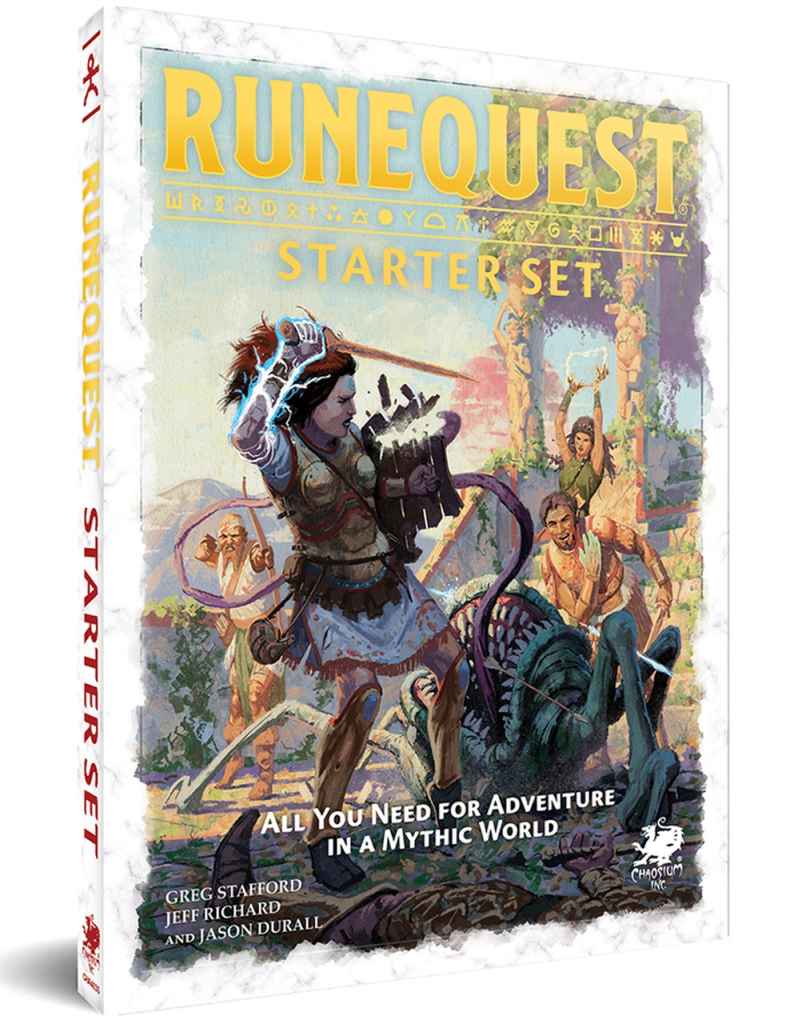
The RuneQuest Starter Set cover by Ossi Hiekkala is now available on the Redbubble store, which means you get get that wonderful picture of Vasana & friends fighting a Krarshtkid on, say, a skirt or a shower curtain or a pillow. If you’re a very boring person, I suppose you could simply get it as a poster but you’re not a boring person, are you? You’re a brave person, who goes where nobody dares to go!
Jonstown Compendium

The Jonstown Compendium is Chaosium’s community content program for all Gloranthan games, hosted on DriveThruRPG. Disclaimer: all the relevant links are affiliate links that hopefully will let us cover some of the hosting and maintenance costs for the website and podcast! Thanks for using them!
Day’s Rest
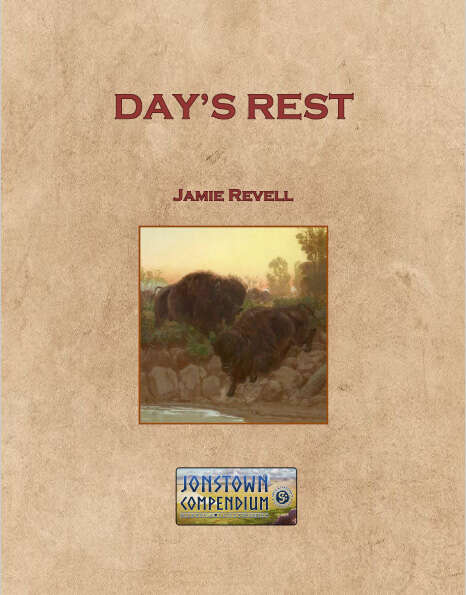
Jamie Revell, who usually specializes in the Genertelan West, has released a book on Day’s Rest, one of the oases of Prax:
This is a mini-sandbox setting describing one of the Praxian oases closest to Sartar and including fourteen NPCs that can provide interaction or story possibilities for RuneQuest games in Glorantha. It also provides a guide to the often-overlooked Oasis Folk of Prax.
Jeff’s Notes

Jeff Richard, the current mastermind on everything Gloranthan at Chaosium, is often posting notes and thoughts on the RuneQuest Facebook group. Here’s our curated list from the past week. A partial archive of these sources is compiled on the Well of Daliath.
The Collective Unconsciousness
Jeff has some thoughts about the “Collective Unconsciousness” of some RPG settings, such as the God Time in Glorantha, the Dreamlands in Call of Cthulhu, or the Enchanted Britain of Pendragon. As mentioned in issue 47 of the Journal, now that Jeff’s Facebook posts are correctly archived on the Well of Daliath, I won’t always quote them in full here. This is the case here so follow the links if you want the full thing.
So in RuneQuest, this is heroquesting into the realm of myth. In RuneQuest, myth describes the eternally occuring events of the God Time – by that I mean that the God Time is not the past, present, or future, but something that is constantly there on the “other side.” The mythic event where the Sun was killed by Storm is always occuring, as is the mythic event where the Sun was returned to the heavens by the gods. This is the realm of archetypes and the source of stories – we might give some of these entities and stories names to better grasp them, maybe we call this Zeus and Cronus or Orlanth and Yelm to better ground ourselves, but the names can be deceptive. It is the archetype that we are dealing with – everything else is something we add to it.
[…]
RPG adventures into the unconscious are great fun (and can feel very primal and powerful regardless of system) but they pose hurdles on the GM and players. How do we interact with an archetype – it is both more powerful but also less powerful than us. Adolescent Jack can defeat the Giant, and the Wolf can devour Granny without killing her. How do we travel through the realm of archetypes – a voyage in the realm of myth or dream does not have the same sense of space as a horse journey through Late Antiquity Britain, Dragon Pass, or a train journey across Europe. Heck, how do we distinguish between the unconscious realm and the mundane? Endless dreaming is of course indistinguishable from death, and we want our characters to live! But I find this adventuring in the unconscious showing up in all of my games – even our explorations of Ringworld.
That’s interesting, and of course that’s just Jeff own preferences being laid out. Personally, I don’t know if the diegetic recursion is very important to my games. I don’t necessarily need my character to delve into some collective unconscious inside the game when, really, I am already doing that by playing an RPG to be begin with. Because that’s what the game is: it’s a collective world of stories in which we interact with archetypes through our characters. Only they’re not necessarily “raw” archetypes, it’s up the gamemaster to craft NPCs that are either primal or complex. Interestingly enough, some games like Unknown Armies even integrate NPCs-as-archetypes into the lore of the setting.
What seems interesting to me is that these settings have “strange” mechanics that are accessible through a unique activity that happens to be a bit meta. Without heroquesting, Glorantha might be “just” a sword & sandals setting, but it’s enhanced by the ability to interact with myths and get rules-breaking effects. The reason that Call of Cthulhu’s Dreamlands weren’t too interesting in previous editions is, I think, that there wasn’t much in the way of dreaming mechanics where one can “push” on the dreamscape and have it push back, or whatever you can think of that would make the Dreamlands more than “just” a parallel fantasy universe. And thankfully from what Mike Mason has been sharing, this is going to change.
Greg’s Map Projections
Map alert! Jeff has shared some new (as far as I know) Glorantha cartography from Greg Stafford’s archives:
One of Greg’s many interesting map projections intended to get a better feel for how things fit together, I particularly like this one as it shows the connection between Delela and Dorastor, and Halikiv and Aggar, as well as how far off Talastar is from Dragon Pass.
My ex-GIS developer brain will quickly gloss over the use of “map projection” here and dive into the map proper:
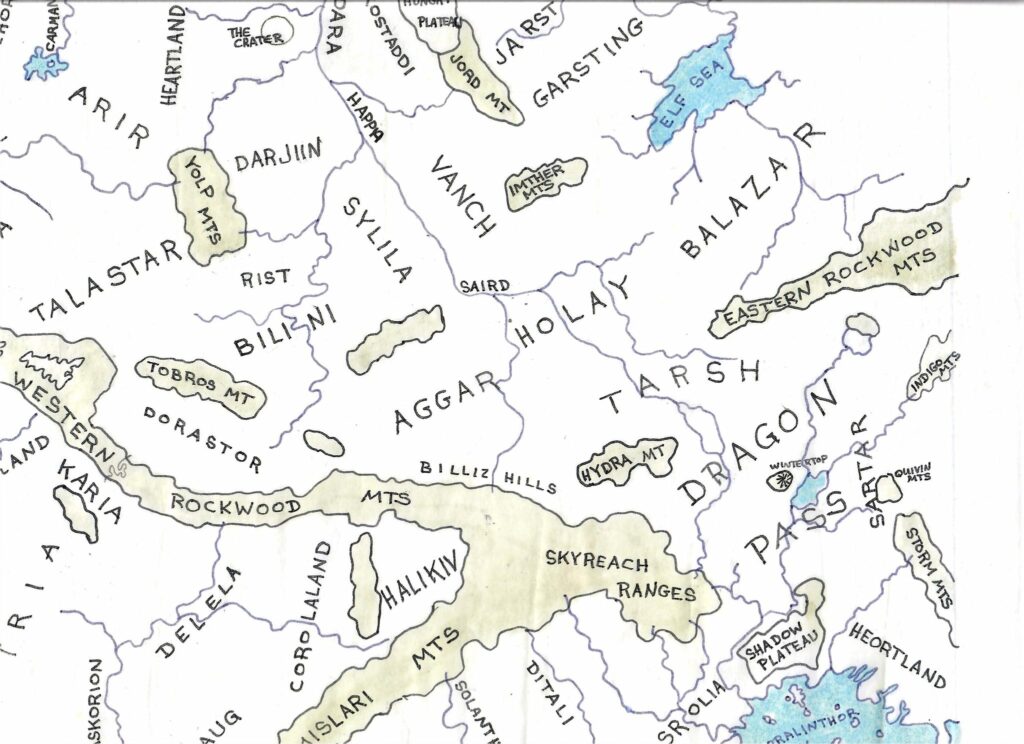
The second of these maps goes further west, and again shows how far the Orlanth hill culture extends in the west, And nicely compares northern Ralios to the Lunar Provinces.
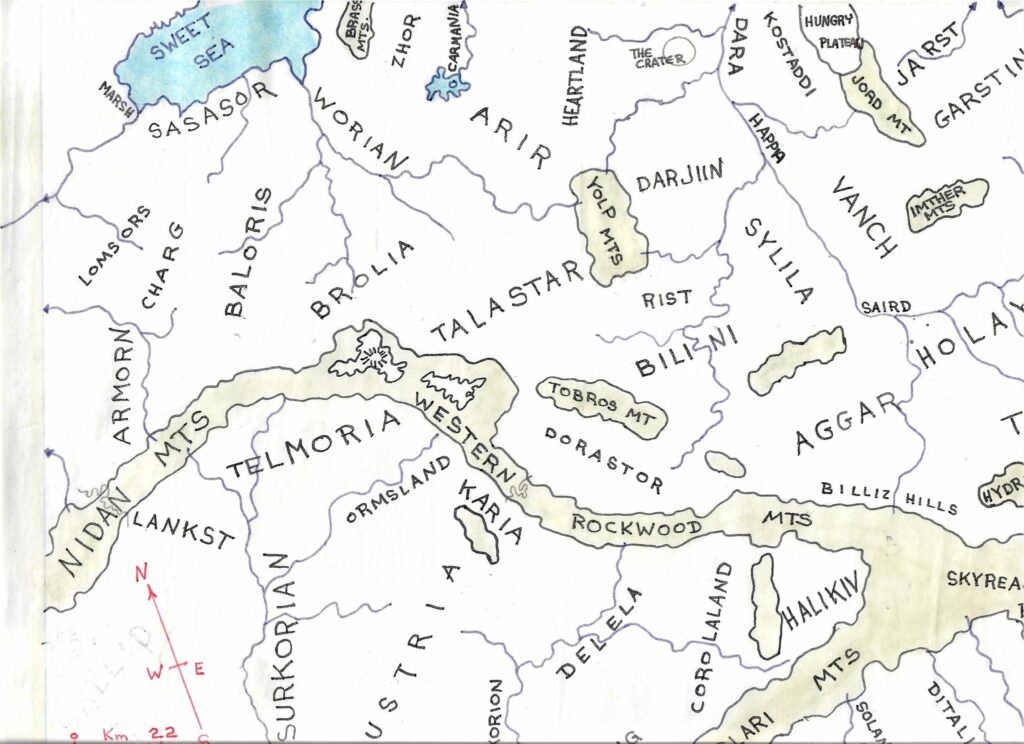
I put both maps together, just because I’m that kind of guy:
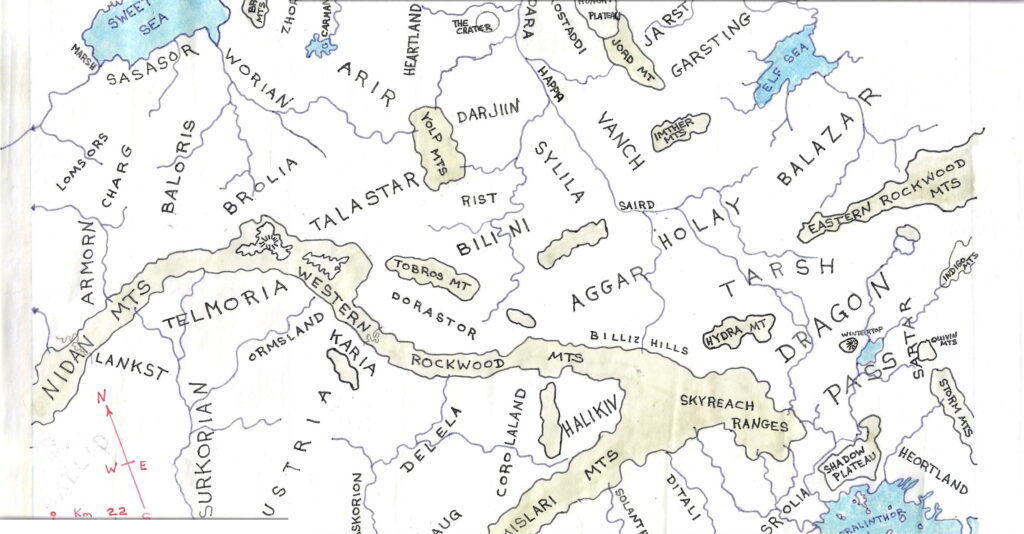
I don’t see much difference from the Argan Argar Atlas maps, although it’s tricky to compare them since North points at an angle here. At least, it’s nice to have all the landmarks removed, with only the region names written down (these names were only given secondary importance on the AAA maps, and were often obscured by all the cities and rivers and forests and such).
The Horse Queens
Jeff talks about the two main horse queens of central Genertela. The first is of course the Feathered Horse Queen of the Grazelands, and the other one is the Queen of Filichet, in Holay, a province of the Lunar Empire. They both descend somehow from the same solar Pure Horse People ancestors:
These traditions have been separated for nearly a thousand years. And yet they reach to similar archetypes and places in the Hero Plane – the horse-loving goddess who grants the right to rule the land.
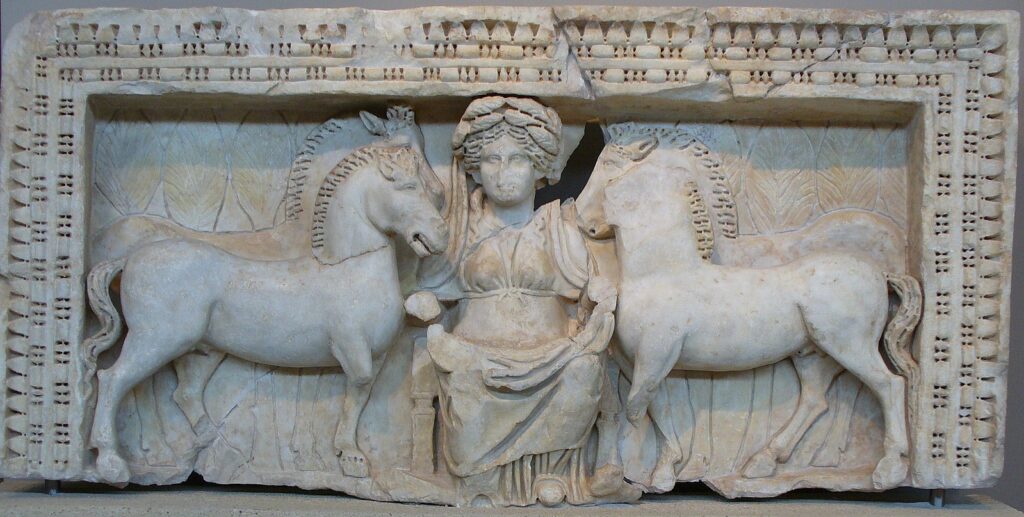
Jeff uses a picture of Epona here, which is a Greek horse goddess.
Interestingly the horse loving goddess does not receive cult directly but almost always as part of another larger cult.
Note that the Queen of Filichet is also the high priestess of Redaylda, the Orlanthi horse goddess, in addition to ruling the Kingdom of Holay.
You can read the rest on the WoD archive here.
All the Souls
One of the nice things about the worldbuilding of Glorantha is that it can get as much philosophical as it gets mythical. For instance, each culture and cult has their own idea about where we come from, where we go when we die, and even, sometimes, what is the nature of the soul. In a BRP Central thread about sorcery, Jeff talks briefly about this topic. Of course, it starts with the usual Gloranthan disclaimer that “yes, everything is true to some degree“:
I can easily say the Brithini view and the Orlanthi view are equally true interpretations of what happens when you die. It just depends on what you are saying is your essential “you”.
Remember, few people believe that there is only one soul. What we track as the existential Self depends on what we focus on.
Everybody’s favourite wizard, Zzabur, has famously strong opinions about “the self” and how he really really doesn’t want to lose it:
Zzabur says that the will, the ego, the self – all that is explainable in materialist terms as matter and energy. There is spirit and soul, and that is the energy source that powers the raw matter – the body. But when the body dies, the energy is NOT the self. And thus it is nonsense to talk about Solace or whatever. Sure maybe some of that energy goes to various places, but you are not that energy.
Solace is some sort of Western Malkioni epiphany that lets you become an “Ascended Master”, which may or may not be a big deal depending on which Malkioni school of thought you adhere to (more on that in last week’s Journal). Either way, Zzabur doesn’t buy it. I guess that you either are, or you aren’t. Whatever remains after your death is an echo, or something that believes it’s you.
Anyway, like I mentioned, various cultures have various opinions on the souls. Dara Happans and other solar-based cultures generally think your soul has 6 parts, while the Orlanthi think your soul has 5 parts… although funnily enough it sort of overlaps with your physical body:
The number of souls we say a person has is really a matter of how a cult defines things. So with the Orlanthi we have:
– Darkness Soul (the individual’s shadow);
– Water Soul (blood and bodily fluids);
– Earth Soul (bones, tissues);
– Fire Soul (bodily heat); and
– Air Soul (the vital breath).The Orlanth cult says your vital breath is the essential you – and it, as magical Air, will return to Orlanth’s Hall until it is carried down again by Orlanth’s winds to return to the world. If you are a hero, part of it always exists there in Orlanth’s Hall.
Meanwhile, the Ernalda cult focuses on the bones and tissues that can be preserved and cared for within the Earth, where its magical essence resides with Ty Kora Tek.
And it is possible to meet the same dead soul in both the Lands of the Dead (Ty Kora Tek) and Storm Home or at the Four Winds or wherever.
Jeff expands cryptically on that last bit, about meeting the dead:
How are you discussing with them? How are you meeting them? I mean they are dead after all. Are you wandering around the Hero Plane somewhere trying to find them? Did you critical a Love Family roll while visiting Orlanth’s Hall on his high holy day? Is this the start of the Lightbringers Quest, when the ghosts show up? Are you hiring a Daka Fal priest to summon their spirit? What is going on?
Each approach to the dead is going to have a different result.
I assume that the way you meet the dead, and therefore which aspect of their soul you meet, is going to manifest as a different sort of ghost or spirit with different preoccupations. The Air Soul encountered in the Storm Home might look like an air spirit, transparent and floating like the wind, asking you to carry on with their old grudges and loyalties. The Earth Soul however might be encountered underground, looking like a decomposing skeleton, and mostly concerned with resting and finding peace. I’m obviously making all of this up and I don’t know if that’s what Chaosium’s Glorantha looks like, but I’m gonna keep this in mind for the next time my players want to meet some ancestors.
Deities of Caladraland
Jeff talks briefly about the deities of Caladraland.
Caladra and Aurelion – the Volcano Twins – are the patron deities of Caladraland, and some 20% of the population are devoted to them. They are the twin offspring of Lodril and Asrelia – and younger siblings to Ernalda and Maran Gor.
The cult in its current form dates to the Second Age, but is of great importance in Caladraland, and also found among the Ditali.
The Ditali are an Orlanthi tribe from Maniria — go west from Holy Country and you’ll find them.
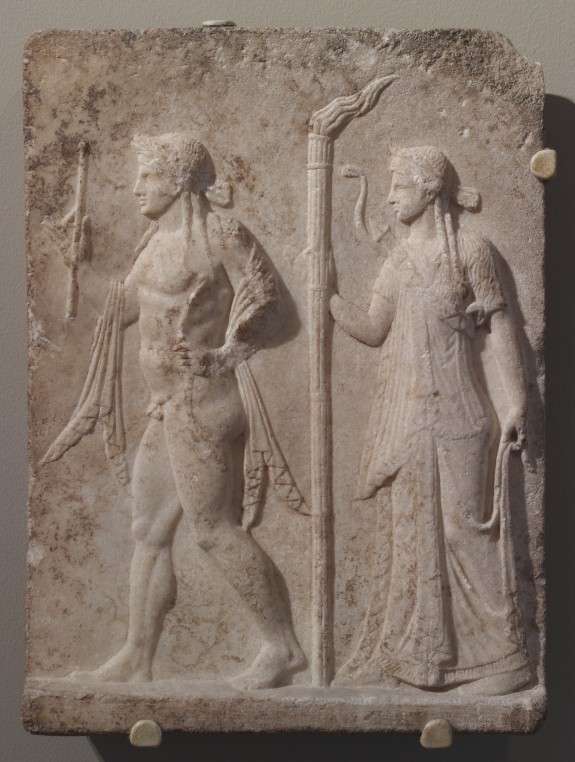
Jeff uses this bas-relief of Apollo and Artemis as an illustration, since these are also twins in the Greek mythology.
Twins are a matter of great magical significance in Glorantha – each of the Runic polarities can be thought of as manifestation of the cosmic Twins – and you see that a lot in the Earth Religion (Asrelia-Ty Kora Tek, Ernalda-Maran Gor, Babeester Gor-Voria). But I think Caladra and Aurelion are the most important cult where both twins are worshiped together in a single cult.
The Twin Gods combine Heat and Earth, Fertility and Harmony. They are crafters, miners, and musicians – the lyre is their instrument.
Interesting — I never thought of pairing these deities together. Asrelia and Ty Kora Tek are both Earth plus Life/Death. Babeester Gor and Voria are pretty much similar. Ernalda and Maran Gor are both Earth plus Harmony/Disorder plus Life/Death (double the dichotomy!)
Veskarthan is just an old Kethaelan name for Lodril. After a few centuries of God Learner domination, Lodril might be the popular name. He’s the big volcano god. About 11% of the population in Caladraland follow Lodril. The Orlanth cult is about the same size as Lodril in Caladraland (10% of the population).
[…]
The most popular cult in Caladraland is…. Ernalda with some 35% of the population. She is the older sister of the Twins and worshiped as the daughter of Lodril.
About the Larnstings
Here’s a short little thing about the Larnstings, which are interpreted as followers of Orlanth Adventurous and Mastakos, focusing on the Movement Rune magic.
Community Roundup
The community roundup is our highlight of interesting things being mentioned in the Glorantha-related Facebook groups, sub-Reddits, and other similar online places.
Dario Corallo Art
Gloranthan illustrator extraordinaire Dario Corallo has been posting regular pieces of art on Facebook and I’m due for another round-up. Some are commissions, some are works-in-progress, and some are character studies.
Exploring Glorantha Interviews Rick Meints (Again)
The Exploring Glorantha crew, JM and Evan, interview Rick Meints again! They talk about ChaosiumCon, the upcoming Stafford House Campaign book, other upcoming RuneQuest publications, and more!
Spirit Magic Foci
Over on the Beer With Teeth blog, Diana “Berra” Probst (which we had on the show a couple times) gives us plenty of cool ideas for involving spirit magic foci in our RuneQuest games.
I’m a big fan of details that add colour to the game. The world is part of the reason why people are playing RuneQuest, not any other game. One that I like, and lean on, is Spell Focuses. My PC has a lot of them, and they are mostly tattoos. She’s got her Heal matrix in the shape of a scar on her right thigh. She was nearly killed in a bar fight by someone with a broken amphora, and to remind herself, and to focus on the learning, she had the scar filled in with woad, and it’s how she focuses on the healing magic.
I think spell foci are a bit like spell components in D&D: everybody knows you’re supposed to have them when you cast your magic, but the vast majority of gamers probably gloss them over and roll the dice directly… anyway, read more here!
Ardwulf’s Roleplaying Ramble
You might already know the Ardwulf’s Lair YouTube channel if you’re a fan of wargaming, Harn, and/or Traveller… but now there are also live-streams, including this brand new “Roleplaying Ramble” series on tabletop RPGs. The first episode is about RuneQuest, a topic that doesn’t seem to be uncommon when it comes to first episodes!
Snakepipe Hollow Walkthrough Part 2
D R has posted the second part of their walk through a 3D reconstruction of Snakepipe Hollow and it’s…. claustrophobic. Part 1 is over here.
Valkyrie Miniature from Bad Squiddo Games
This new Valkyrie Miniature from Bad Squiddo Games might be good enough for a Heortling warrior, whether it’s an Orlanthi adventurer or an NPC like Kallyr or Leika. Plus: zombie horses!
Original Ral-Partha Art
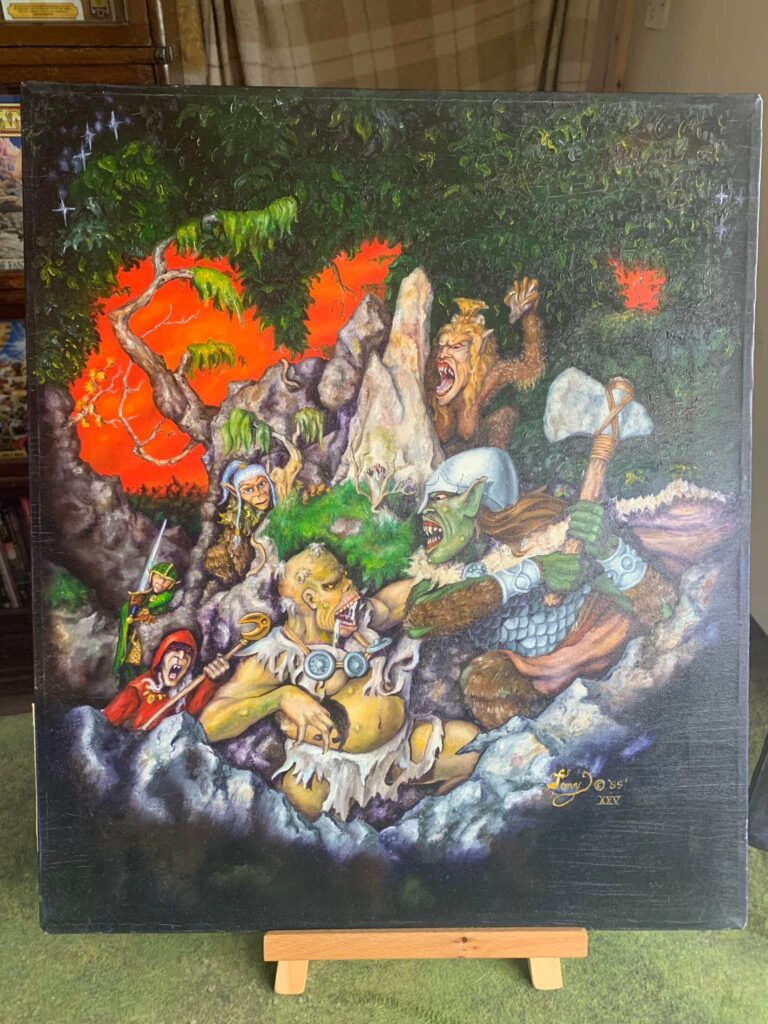
Speaking of miniatures, Andy Smith showed off this original art from the old Ral-Partha line of RuneQuest miniatures. This particular illustration was for the Denizens of the Viking Underworld. It’s not Glorantha-related, but it’s still cool!
Font for Sorcery Techniques
There’s already a font for Gloranthan Runes, and the sorcery techniques are available as SVG graphics, but now Phenomen on BRP Central has put them together in a subset of the existing font. This will probably be useful for any Jonstown Compendium author who wants to deal with philosophers and western sorcerers!
Grab the file here, install it, and it should show up as a variant as pictured above.
Elsewhere on Arachne Solara’s Web
Not everything is about Glorantha, although most things are! Here are loosely relevant things that we found on the interwebs.
Neo-Assyrian Rock Art Discovered Under Turkish House

This unfinished Neo-Assyrian art was discovered recently under a Turkish house. It shows some Aramean gods, with Hadad the Storm God at the front, yielding some sort of lightning thingie. What’s interesting is that it dates back to some time between 900 and 600 BCE, when the Neo-Assyrian empire expanded into Aramean settlements. There was an increasing mix between the two cultures, and this mural demonstrates that by showing Aramean gods in a very Assyrian art style.
The panel shows “ … a local cohabitation and symbiosis of the Assyrians and Arameans in a region and period under firm Assyrian imperial control,” the authors write. They call the panel “ … a striking example of regional values in the exercise of imperial power”—a relationship that could have involved a give and take between Assyrians who wanted to impress their new subjects and Arameans eager to please their new overlords.
That’s something I might want to re-use as my RuneQuest campaign plays through the Lunar occupation of the Far Place. The construction of new buildings featuring Lunar-influenced art or architecture, and even maybe the replacement of previously traditional Tarshite sculptures and paintings could be the starting point of some interesting storylines…
Anyway, find more about this Neo-Assyrian mural here.
Warriors and Ladies of Archontiko

The Archeological Museum of Pella, in Greece, has some exhibits about the ancient Kingdom of Macedon, since Pella was its capital (that’s where Alexander the Great was born). Not far from there is the village or Archontiko where a large burial site was found, including thousands of graves dating back to the 6th century BCE.

Of note, there were several individual graves for warriors and nobles whose face was covered with a gold sheet, or whose mouth was covered with a sort of golden medallion called a “stomion”.
I’m immediately thinking of a Yelmalion or other solar burial tradition (because gold is their thing, of course) but I guess you could change the type of metal and use the same idea for really any Gloranthan culture.
Thank you for reading
That’s it for this week! Please contact us with any feedback, question, or news item we’ve missed!






